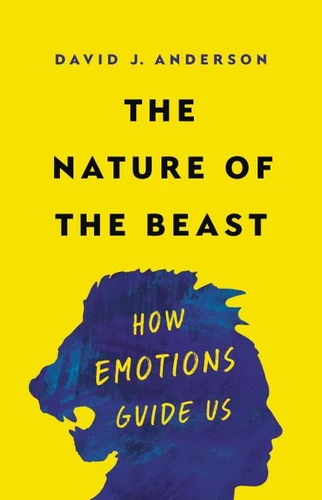The Nature of the Beast. How Emotions Guide Us
Par :Formats :
Disponible dans votre compte client Decitre ou Furet du Nord dès validation de votre commande. Le format ePub protégé est :
- Compatible avec une lecture sur My Vivlio (smartphone, tablette, ordinateur)
- Compatible avec une lecture sur liseuses Vivlio
- Pour les liseuses autres que Vivlio, vous devez utiliser le logiciel Adobe Digital Edition. Non compatible avec la lecture sur les liseuses Kindle, Remarkable et Sony
- Non compatible avec un achat hors France métropolitaine
 , qui est-ce ?
, qui est-ce ?Notre partenaire de plateforme de lecture numérique où vous retrouverez l'ensemble de vos ebooks gratuitement
Pour en savoir plus sur nos ebooks, consultez notre aide en ligne ici
- Nombre de pages304
- FormatePub
- ISBN978-1-5416-7464-6
- EAN9781541674646
- Date de parution14/03/2022
- Protection num.Adobe DRM
- Infos supplémentairesepub
- ÉditeurBasic Books
Résumé
A pioneering neuroscientist offers?a new?way of understanding how emotions drive behaviorDoes your dog get sad when you leave for the day? Does your cat purr because she loves you? Do bears attack when they're angry? You can't very well ask them. In fact, scientists haven't been able to reach a consensus on whether animals even have emotions like humans do, let alone how to study them. Yet studies of animal emotion are critical for understanding human emotion and mental illness. In The Nature of the Beast, pioneering neuroscientist David J.
Anderson describes a new approach to solving this problem. He and his colleagues have figured out how to study the brain activity of animals as they navigate real-life scenarios, like fleeing a predator or competing for a mate. His research has revolutionized what we know about animal fear and aggression. Here, he explains what studying emotions and related internal brain states in animals can teach us about human behavior, offering new insights into why isolation makes us more aggressive, how sex and violence connect, and whether there's a link between aggression and mental illness. Full of fascinating stories, The Nature of the Beast reconceptualizes how the brain regulates emotions-and explains why we have them at all.
Anderson describes a new approach to solving this problem. He and his colleagues have figured out how to study the brain activity of animals as they navigate real-life scenarios, like fleeing a predator or competing for a mate. His research has revolutionized what we know about animal fear and aggression. Here, he explains what studying emotions and related internal brain states in animals can teach us about human behavior, offering new insights into why isolation makes us more aggressive, how sex and violence connect, and whether there's a link between aggression and mental illness. Full of fascinating stories, The Nature of the Beast reconceptualizes how the brain regulates emotions-and explains why we have them at all.
A pioneering neuroscientist offers?a new?way of understanding how emotions drive behaviorDoes your dog get sad when you leave for the day? Does your cat purr because she loves you? Do bears attack when they're angry? You can't very well ask them. In fact, scientists haven't been able to reach a consensus on whether animals even have emotions like humans do, let alone how to study them. Yet studies of animal emotion are critical for understanding human emotion and mental illness. In The Nature of the Beast, pioneering neuroscientist David J.
Anderson describes a new approach to solving this problem. He and his colleagues have figured out how to study the brain activity of animals as they navigate real-life scenarios, like fleeing a predator or competing for a mate. His research has revolutionized what we know about animal fear and aggression. Here, he explains what studying emotions and related internal brain states in animals can teach us about human behavior, offering new insights into why isolation makes us more aggressive, how sex and violence connect, and whether there's a link between aggression and mental illness. Full of fascinating stories, The Nature of the Beast reconceptualizes how the brain regulates emotions-and explains why we have them at all.
Anderson describes a new approach to solving this problem. He and his colleagues have figured out how to study the brain activity of animals as they navigate real-life scenarios, like fleeing a predator or competing for a mate. His research has revolutionized what we know about animal fear and aggression. Here, he explains what studying emotions and related internal brain states in animals can teach us about human behavior, offering new insights into why isolation makes us more aggressive, how sex and violence connect, and whether there's a link between aggression and mental illness. Full of fascinating stories, The Nature of the Beast reconceptualizes how the brain regulates emotions-and explains why we have them at all.



